Southampton medieval walls scheme work under way
- Published
More than 150 flats, as well as student accommodation and shops are set to be built
Demolition work has started as part of a £100m scheme to redevelop the area of central Southampton alongside the medieval town walls.
More than 150 flats, as well as student accommodation and shops are set to be built with the walls as the centrepiece.
Work has begun to take down buildings alongside Queensway and East Street.
Council leader Simon Letts said the walls were "hidden treasures" in the city.
"The walls are hidden from view and with opening them up we'll have a superb piece of public space. The heritage of the city will be on view to a wider population," he added.
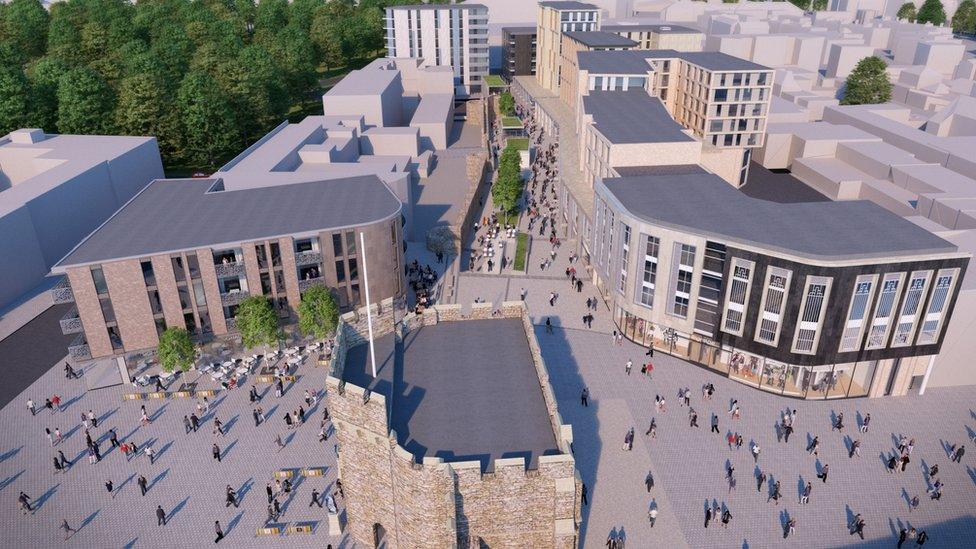
The plans feature a boulevard that includes the city's medieval walls
The plans, approved by the council's planning committee, external in January involve an open boulevard, making a feature of the medieval walls which are currently tucked away among the side of buildings.
The Bargate was the first part of the town walls to be built, dating to about 1180, with alterations in about 1290. Southampton did not become a city until 1964.
James Burchell of developers Tellon Capital said work was being done to "cover, protect and look after" the walls while demolition is carried out on adjacent buildings.
"We have to be sensitive as some of the existing buildings are quite close to the walls.
"It'll be a beautiful scene with people able to walk down with the walls exposed, pavilions, cafes, entertainment - an area in the city that the city will be proud of."
The existing 1980s Bargate shopping centre and multi-storey car park are among the buildings earmarked for demolition to make way for 152 flats, 185 student residential units, shops and restaurants.
The first student accommodation is due to be ready for August 2019, with retail units open by Christmas the same year.

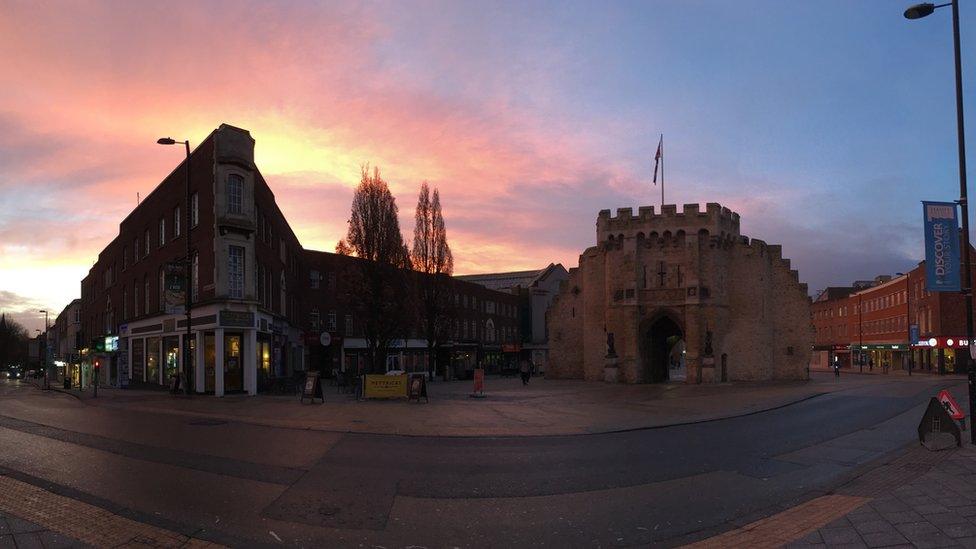

Southampton's town walls
The oldest sections, Bargate and Eastgate, date from 1180 - alterations were made in about 1290
They were extended following the devastating French raid of 1338. Edward III ordered that walls be built to "close the town", with the western walls completed in 1380
The walls - including eight gates and 29 towers - stretched for one and a quarter miles, with the Bargate as the entrance to the medieval town
In the late 19th Century an idea to demolish the Bargate as an impediment to traffic was defeated following a public campaign. But in the 1930s the adjoining walls were removed to allow traffic to flow on either side.
Roughly half of the walls, 13 of the original towers and six gates are still standing, making them some of the most complete medieval town walls in the country.
Source: Southampton City Council
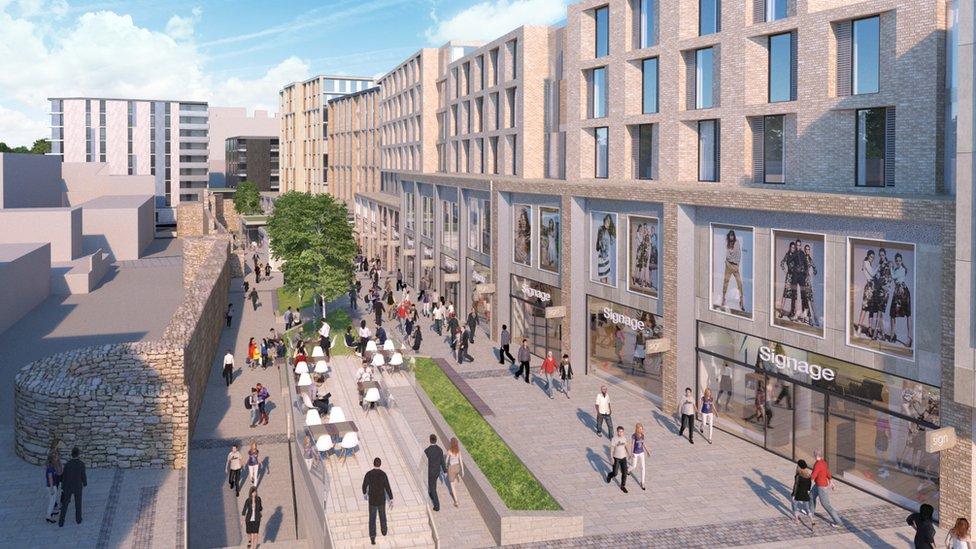
The plans include private flats and student accommodation
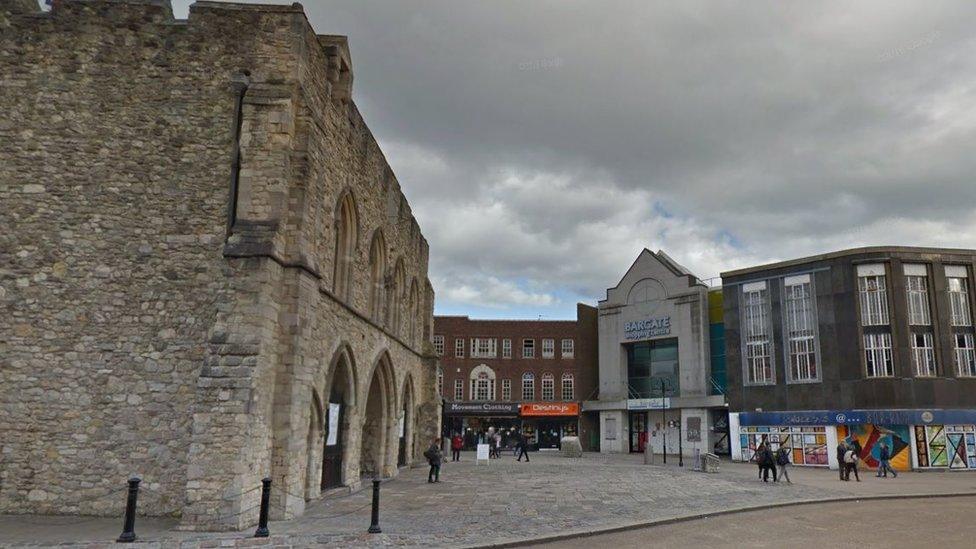
The existing 1980s Bargate shopping centre is set for demolition
- Published11 January 2017

- Published30 November 2016
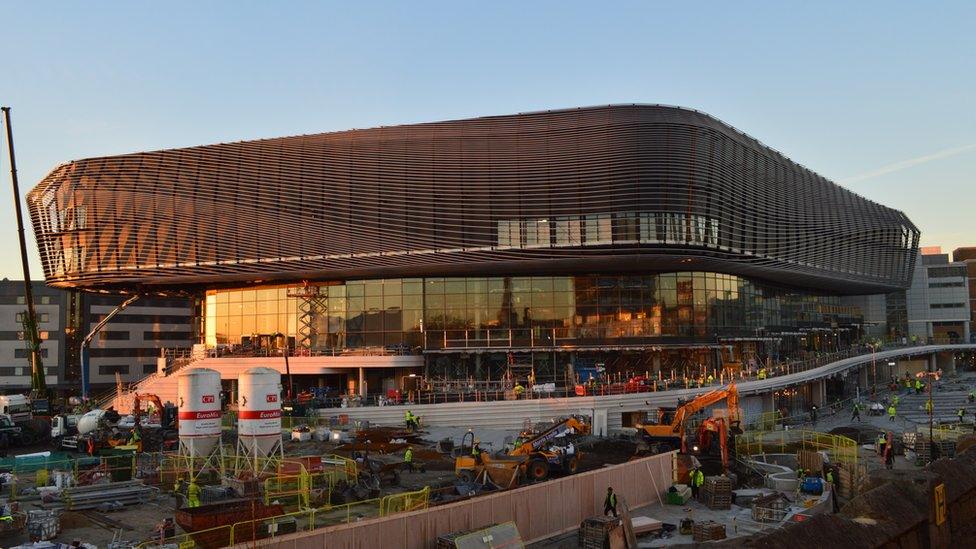
- Published20 January 2016
